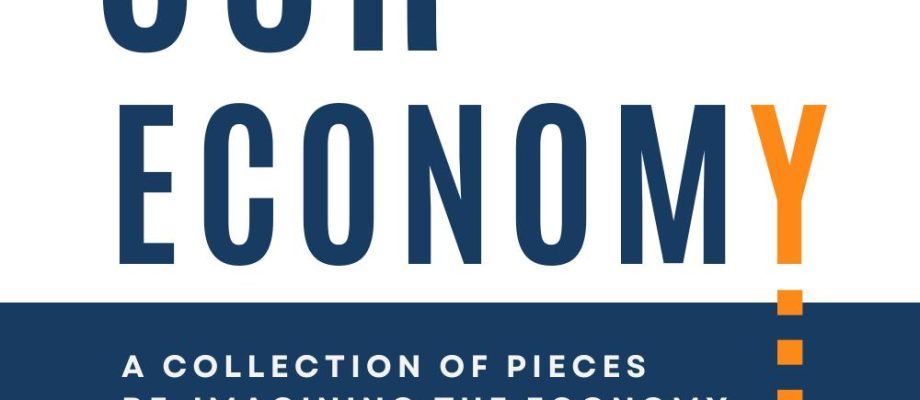By Aritra Chakrabarty
The issue of climate change has long plagued the global community, exacerbated by natural disasters, and posing existential threats to vulnerable nations. In response to this pressing concern, the Loss and Damage Fund has emerged as a beacon of hope, aiming to support the most affected countries. However, delving into its governance and operationalization reveals a nuanced tapestry of challenges and possibilities. The Loss and Damage Fund was one of the few successful outcomes from COP27. For the first time in three decades of global climate negotiations airtime, the Conference of Parties (COP) at its 27th meeting of parties achieved a historic landmark by making reaching an agreement for funding mitigation and adaptation strategies towards negative impacts of climate change. The developed countries pledged to provide finance for relatively poorer countries in the form of the “Loss and Damage” Fund (Kurukulasuriya, et al. 2022). The Fund was created to assist the most vulnerable countries stricken by climate-related disasters. A transitional committee (TC) with members from 24 countries (14 states from the Global South and 10 states from the Global North) was constituted to make recommendations for countries who would be financed under the Fund.
A brief history of COP
Ever since the first Conference of Parties (COP) was initiated in Berlin in 1995, COPs have been used to review what the signatory Parties (the governments who have signed up) have achieved and measure their progress. These annual conferences organized by the United Nations Framework Convention on Climate Change (UNFCCC) are the sites for negotiations, discussions, and abating challenges.
COP is the supreme decision-making body of the UNFCCC Convention. All States that are Parties to the Convention are represented at each COP. During this conference, the parties review the implementation of the agenda from previous conventions, review legal documents that have been mutually agreed upon by the Parties and take necessary decisions to promote the objective of UNFCCC.
Establishment and Evolution of the Fund
The journey toward the establishment of the Loss and Damage Fund has been a testament to the arduous nature of international negotiations. Stemming from calls made in 1990 by the Association of Small Island States for an international insurance pool, the trajectory of climate finance has witnessed dialogues, committees, and pivotal agreements, culminating in the establishment of the Warsaw International Mechanism on Loss and Damage in 2022 (Kattumuri, et al. 2022).
Will the Fund solve climate finance problems?
The TC had been tasked with the responsibility to arrive at a consensus-based decision on whether loss and damage should be directed to vulnerable country governments, vulnerable communities with the national boundaries, to international and local non-governmental organizations (NGO) or a combination of all the three before the 28th COP. There is ambiguity regarding the particulars of the agreement such as – no official definition of the scope and extent of Loss and Damage to be considered for the purpose of the funding. Similarly, the eligibility criteria of selection of vulnerable countries/communities is still under discussion, as well as the design of the funding mechanism is unclear. The plan for the committee was to meet throughout 2023 to create a workplan to define “loss and damage”, and associate it with a methodology for estimation, make recommendations for “must pay into the fund and who is eligible to receive funding”, and broadly, a fair and equitable outcome by COP 28 which could be in the form of governing instruments to oversee, monitor, operationalize the funding, etc. (Cleetus 2023). The fourth meeting of the TC concluded in October 2023. The members failed to reach a consensus on the recommendations due to the stance taken by the developed nations. The TC will meet for the fifth time on 3-4 November to come to a decision regarding the Loss and Damage finance.
Analysis of the two synthesis reports prepared by UNFCCC (2023) sheds light on the intricacies of the transitional committee’s role and the evolution of funding mechanisms. The committee, comprising members from 24 countries, faces the critical task of recommending operational strategies for the Fund at the 28th Conference of Parties (COP). The synthesis reports underscore pertinent questions that need addressing, such as the existing typology of actions for responding to loss and damage, funding sources, mechanisms, and their overlays, alongside the exploration of new mechanisms. The second synthesis report provides a comprehensive overview of the funding landscape, categorizing financial areas, instruments, and institutions involved. It identifies critical gaps in existing funding mechanisms, such as structural constraints and a lack of provisions for addressing uninsurable scenarios.
What can theory explain about climate finance governance?
Analyzing the Fund through different theoretical lenses – Realism, Liberalism, and Constructivism – offers multifaceted insights into the motivations and dynamics underlying global climate negotiations. The aim of having a theory of international relations (IR) is to make better sense of actors, structures, institutions, processes, and particular episodes. A theory of international relations/politics is needed to separate what unfolds in front of us as facts and the interpretation of those facts. A measure is required to ascertain which interpretation will lead to what understanding and how it will shape future course of action (Holliday, 1994: 25). Secondly, every actor in the international system identifies with an identity that shapes a strand of world view. Each actor thus creates a world view that is shaped by their language, religion, culture, ethnicity, class, and gender. Examining such identities helps unpack and understand the position of each actor on the world stage.
Realism/Neorealism (Donelly 2005): According to Realism and Neorealism, any global agreement on climate finance, climate targets is non-binding, anarchic and states will gain from agreeing to such agreements if their relative power increases over other states. History of climate negotiations shows that developed states have had their way due to their relative power over vulnerable states.
Liberal/Neoliberalism (Burchill 2005): In this perspective, non-state actors take prominence such as the UNFCCC and allied bodies (IPCC). The rise of private finance and market-based approaches to carbon emission reduction is a feature of neoliberal approach. The issue is market forces and the private sector will only look for funding opportunities if there’s profit to be derived from funding.
Constructivism (Rues-Smit 2005): This perspective is based on norms that are enshrined in UNFCCC legal framework (CBDR). The norm of cooperative behaviour is socially constructed among states through environmentalist movements, change in narrative, and cosmopolitan view of IR.
The fund has been created based on commitment of parties who are part of the TC and are parties to the Convention on the Paris Agreement (CMA). This position recognizes with the constructivist view. Parties commit to cooperation because it identifies with their national belief, identity, and social reality, specially of the vulnerable countries impacted the most by climate change
However, the majority of the funding arrangements and the funding agencies are private actors and private sector mechanisms. Loans, equity, and a line of credit works on principles of finance that applies to any scenario. Hence, there is a huge gap between the focus of finance and the objective of the beneficiaries. There is a lot of ambiguity on what is understood as loss and damage by the funding agencies and what categories as loss and damage by the impacted countries.
Finally, as far as realism is concerned, “no international agency can coerce countries to comply with an agreement if its significantly inconsistent with their national interests.” The TC and the Fund can be dissolved at any point in time. It doesn’t happen when states recognize that domestic politics also aligns with climate change practices and identifies with climate justice.
The possible implementation scenarios offer both promise and challenges. The Fund’s establishment, rooted in the commitments of the Paris Agreement, aligns with a constructivist perspective emphasizing cooperative behavior. However, the predominant role of private actors and market-based approaches presents a gap in aligning financial focus with the needs of the affected communities.
Final Reflections
Ultimately, the governance of the Loss and Damage Fund embodies the complexities and interplay of national interests, power dynamics, and the evolving norms within the global climate governance landscape. The success of the Fund lies in navigating these intricacies, aligning financial mechanisms with the dire needs of the most vulnerable, and fostering a collaborative, inclusive approach.
As we stand on the precipice of climate change’s impact, the governance of the Loss and Damage Fund symbolizes a pivotal opportunity for collective action, underlining the urgency of addressing climate-related catastrophes and fostering a more resilient, sustainable global community.
Aritra Chakrabarty is a PhD student at Michigan Technological University (MTU) in the Environment and Energy Policy (EEP) program. Aritra’s research focuses on social sustainability of renewable energy in the Global South, and his work is based on Gender and Energy Transitions. As a public policy researcher, the research is situated in energy and environment policies and focuses on energy policy at community scale and Just energy transition in the Global South.








